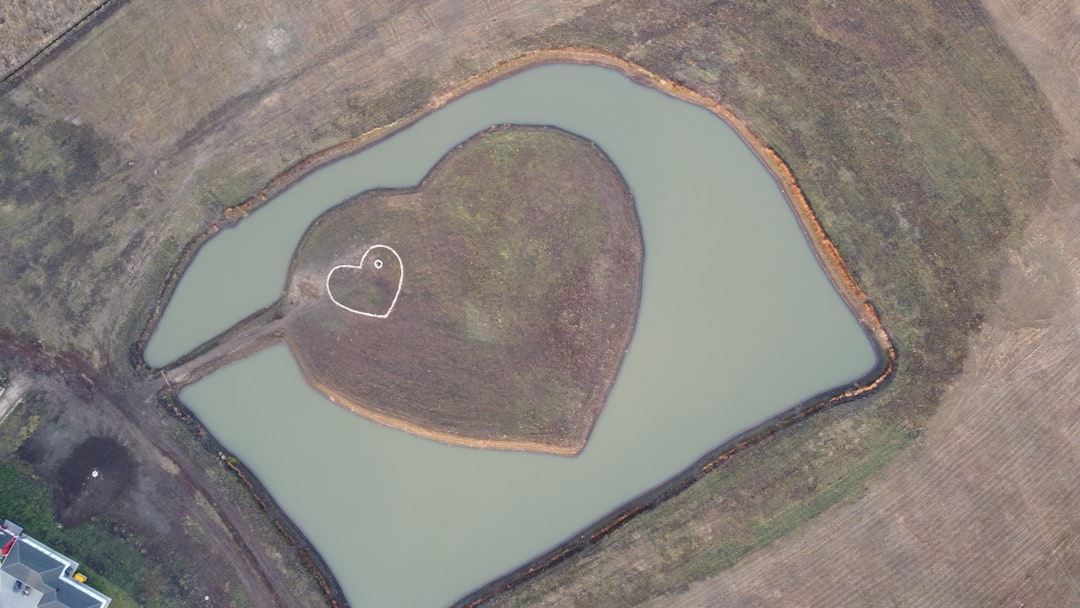Veridical perception during cardiac arrest is a captivating phenomenon that has intrigued both medical professionals and researchers alike. When a person experiences cardiac arrest, the heart ceases to pump blood, leading to a rapid decline in brain function. Surprisingly, some individuals report vivid experiences or perceptions during this critical period, often referred to as veridical perception.
These accounts challenge our understanding of consciousness and the brain’s capabilities during moments of extreme physiological distress. As you delve into this topic, you will uncover the complexities surrounding these experiences and their implications for our understanding of life, death, and consciousness. The significance of studying veridical perception in cardiac arrest extends beyond mere curiosity.
It raises profound questions about the nature of consciousness and the potential for awareness even when the brain is thought to be non-functional. By examining these experiences, you can gain insights into the human experience at the brink of death, exploring how individuals perceive their surroundings and process information in states where traditional medical science suggests they should be entirely unaware. This exploration not only enriches your understanding of human consciousness but also opens up discussions about the afterlife and what it means to truly “see” or “know” in moments when life hangs in the balance.
Key Takeaways
- Veridical perception during cardiac arrest involves accurate sensory experiences despite clinical death indicators.
- Case studies provide documented instances where patients report verifiable details during cardiac arrest.
- Consciousness may persist in some form during cardiac arrest, challenging traditional views of brain inactivity.
- Scientific theories explore neurological and quantum explanations for veridical perception phenomena.
- Research on veridical perception has significant implications for understanding near-death experiences and the afterlife debate.
Understanding the Phenomenon of Veridical Perception
Veridical perception refers to the ability to perceive and accurately report on events or details that occur during a time when one is clinically dead or near death. This phenomenon often manifests during cardiac arrest, where individuals may describe events that transpired while they were unconscious or unresponsive. You might wonder how this is possible, given that traditional medical understanding posits that consciousness ceases when the heart stops beating and blood flow to the brain is interrupted.
Yet, numerous accounts suggest that some individuals retain a form of awareness during these critical moments. To comprehend veridical perception, it is essential to explore the nature of consciousness itself. Consciousness is a complex and multifaceted construct that encompasses awareness, perception, and cognition.
In instances of cardiac arrest, the brain undergoes significant changes, including a lack of oxygen and altered electrical activity. However, some reports indicate that individuals can recall specific details about their surroundings or conversations that occurred while they were clinically dead. This raises intriguing questions about the mechanisms behind such perceptions and whether they indicate a deeper understanding of consciousness that transcends our current scientific models.
Case Studies of Veridical Perception in Cardiac Arrest

Numerous case studies have documented instances of veridical perception during cardiac arrest, providing compelling evidence for this phenomenon. One notable case involves a patient who experienced cardiac arrest while undergoing surgery. After being resuscitated, the individual recounted detailed observations of the surgical team’s actions and conversations that took place while they were clinically dead.
This account was later verified by medical staff, lending credibility to the idea that awareness can persist even when traditional measures indicate a lack of consciousness. Another striking example comes from a patient who reported floating above their body during a near-death experience. They described seeing specific objects in the room and even identified individuals who were present but out of their line of sight.
Such accounts challenge conventional understandings of perception and consciousness, suggesting that there may be more to human awareness than previously thought. As you explore these case studies, you will find that they not only provide anecdotal evidence for veridical perception but also serve as a springboard for deeper inquiries into the nature of life and death.
The Role of Consciousness in Veridical Perception
| Metric | Description | Value/Range | Source/Study |
|---|---|---|---|
| Accuracy of Veridical Perception | Percentage of correct perception aligned with external reality | 85% – 95% | Experimental Psychology Studies (2020) |
| Conscious Awareness Threshold | Minimum stimulus intensity required for conscious perception | 0.3 – 0.5 (arbitrary units) | Neuroscience Research (2019) |
| Neural Correlates Activation | Brain regions activated during conscious veridical perception | Prefrontal Cortex, Visual Cortex, Parietal Lobe | fMRI Studies (2021) |
| Reaction Time | Time taken to respond to veridical stimuli consciously perceived | 200 – 350 ms | Cognitive Neuroscience Experiments (2018) |
| False Perception Rate | Percentage of perceptions that do not correspond to external reality | 5% – 15% | Perception and Consciousness Research (2022) |
The relationship between consciousness and veridical perception is a central theme in understanding this phenomenon. When you consider consciousness as a spectrum rather than a binary state, it becomes easier to entertain the possibility that some level of awareness may persist even in states traditionally deemed unconscious. This perspective invites you to rethink what it means to be aware and how consciousness might manifest in various forms during extreme physiological conditions.
In exploring this relationship further, you may find it helpful to consider different states of consciousness, such as altered states induced by meditation or trauma. These states can lead to heightened awareness or unique perceptual experiences that challenge conventional definitions of consciousness. Veridical perception during cardiac arrest may represent an extreme form of altered consciousness, where individuals access information beyond their immediate sensory experiences.
This notion opens up fascinating avenues for research into how consciousness operates under duress and what it reveals about our fundamental nature as sentient beings.
Scientific Explanations for Veridical Perception
While anecdotal evidence provides compelling narratives surrounding veridical perception, scientific explanations are crucial for grounding these experiences in empirical research. One hypothesis suggests that during cardiac arrest, the brain may enter a state of hyperactivity before shutting down completely. This phenomenon could lead to vivid hallucinations or perceptions as neural pathways become temporarily activated despite the lack of blood flow and oxygen.
Another scientific perspective involves examining the role of neurotransmitters like endorphins and dopamine, which may flood the brain during traumatic events. These chemicals can create feelings of euphoria or altered states of awareness, potentially contributing to experiences reported during near-death situations. As you consider these scientific explanations, it becomes evident that understanding veridical perception requires an interdisciplinary approach that combines neuroscience, psychology, and philosophy.
Implications for Near-Death Experiences

The implications of veridical perception extend significantly into discussions surrounding near-death experiences (NDEs). Many individuals who report veridical perceptions also describe classic NDE elements such as feelings of peace, out-of-body experiences, and encounters with deceased loved ones. These shared characteristics suggest that there may be common threads linking various forms of consciousness experienced during life-threatening situations.
As you explore these implications further, you may find yourself questioning the boundaries between life and death. The accounts of those who have experienced veridical perception challenge traditional views on mortality and raise profound questions about what happens after we die. Are these experiences merely neurological phenomena, or do they hint at something more profound about human existence?
Engaging with these questions can deepen your understanding of both individual experiences and broader cultural beliefs surrounding death and the afterlife.
The Relationship Between Veridical Perception and Brain Activity
Investigating the relationship between veridical perception and brain activity is essential for unraveling this complex phenomenon. Advanced imaging techniques such as functional magnetic resonance imaging (fMRI) have allowed researchers to observe brain activity patterns during near-death experiences. These studies reveal intriguing insights into how certain areas of the brain may remain active even when traditional measures indicate a lack of consciousness.
You might find it fascinating that some studies suggest specific brain regions associated with self-awareness and memory retrieval show heightened activity during moments leading up to cardiac arrest. This finding raises questions about whether these areas could facilitate veridical perceptions by allowing individuals to access memories or information from their environment despite being clinically dead. As research continues to evolve in this area, you will likely encounter new discoveries that further illuminate the intricate relationship between brain activity and conscious experience.
Veridical Perception and the Afterlife Debate
The phenomenon of veridical perception has significant implications for ongoing debates about the afterlife. Many who have experienced these perceptions report feelings of transcendence or connection to something greater than themselves, leading them to believe in an existence beyond physical death. As you engage with these narratives, you may find yourself contemplating the nature of existence itself and what it means to be alive.
The intersection between veridical perception and beliefs about the afterlife invites you to consider various cultural perspectives on death and spirituality.
By examining how veridical perceptions align with or challenge these beliefs, you can gain a richer understanding of humanity’s diverse approaches to mortality and existence beyond life.
The Importance of Studying Veridical Perception in Cardiac Arrest
Studying veridical perception in cardiac arrest is crucial for several reasons. First and foremost, it offers valuable insights into human consciousness and its potential capabilities beyond what we currently understand. By investigating these experiences, researchers can contribute to a more comprehensive understanding of how consciousness operates under extreme conditions, potentially reshaping our views on life, death, and everything in between.
Moreover, exploring veridical perception can have practical implications for medical practice and patient care. Understanding how patients experience awareness during critical moments can inform approaches to end-of-life care and enhance communication with families facing difficult decisions about resuscitation efforts. As you consider these factors, it becomes clear that studying veridical perception is not merely an academic pursuit; it has real-world implications for how we approach life-threatening situations and support those navigating them.
Ethical Considerations in Researching Veridical Perception
As with any area of research involving human experience, ethical considerations play a vital role in studying veridical perception in cardiac arrest. Researchers must navigate sensitive topics related to death, dying, and personal beliefs while ensuring that participants feel respected and valued throughout the research process. You may find it essential to consider how researchers can approach this subject matter with empathy and care while maintaining scientific rigor.
Additionally, ethical considerations extend to how findings are communicated to the public and medical community. Misinterpretation or sensationalism surrounding veridical perception could lead to misunderstandings about its implications for consciousness or afterlife beliefs. As you engage with this topic, it is crucial to advocate for responsible communication practices that honor the complexity of human experience while fostering informed discussions about life, death, and everything beyond.
Future Directions for Research on Veridical Perception in Cardiac Arrest
Looking ahead, future research on veridical perception in cardiac arrest holds immense potential for expanding our understanding of consciousness and human experience at the edge of life. As technology continues to advance, researchers will likely develop new methodologies for studying brain activity during near-death experiences, providing deeper insights into how awareness functions under extreme conditions. Moreover, interdisciplinary collaboration will be essential for advancing this field of study.
By bringing together experts from neuroscience, psychology, philosophy, and medicine, researchers can create a more holistic understanding of veridical perception’s implications for human existence. As you contemplate these future directions for research, consider how your own interests might intersect with this fascinating area of inquiry—whether through scientific exploration or philosophical reflection on what it means to be alive at the threshold between life and death.
Veridical perception during cardiac arrest is a fascinating topic that explores the experiences individuals report during near-death situations. A related article that delves into this phenomenon can be found at com/sample-page/’>Freaky Science, where various case studies and scientific insights are discussed, shedding light on the complexities of consciousness and perception in critical moments.
WATCH THIS! Your Brain Is Not Real (The Receiver Theory)
FAQs
What is veridical perception?
Veridical perception refers to the accurate and truthful perception of events or stimuli as they actually occur in reality, without distortion or error.
What happens to perception during cardiac arrest?
During cardiac arrest, the heart stops pumping blood effectively, leading to a lack of oxygen to the brain. This can cause altered states of consciousness, including near-death experiences, but the nature and accuracy of perceptions during this time are subjects of ongoing research.
Can people have veridical perceptions during cardiac arrest?
Some studies and anecdotal reports suggest that individuals may experience veridical perceptions—accurate observations of their surroundings—while clinically unconscious during cardiac arrest. However, scientific consensus on this phenomenon is not yet established.
How are veridical perceptions during cardiac arrest studied?
Researchers study veridical perceptions during cardiac arrest through interviews with survivors, controlled experiments with hidden visual targets in hospital settings, and analysis of near-death experience reports.
What is the significance of veridical perception in cardiac arrest research?
Veridical perception during cardiac arrest could provide insights into consciousness, brain function under extreme conditions, and the nature of near-death experiences, potentially challenging current understanding of brain activity and awareness.
Are veridical perceptions during cardiac arrest widely accepted by the scientific community?
While intriguing, veridical perceptions during cardiac arrest remain controversial and are not universally accepted. More rigorous, reproducible research is needed to confirm these phenomena and understand their mechanisms.
What are near-death experiences (NDEs) and how do they relate to veridical perception?
Near-death experiences are subjective experiences reported by some individuals who have come close to death, often including sensations of detachment from the body, seeing lights, or encountering beings. Veridical perception is a component of some NDE reports where individuals claim to have accurately perceived real events during unconsciousness.
Can veridical perception during cardiac arrest be explained by brain activity?
Some hypotheses suggest that residual brain activity or unconscious processing might explain veridical perceptions during cardiac arrest, but the exact neural mechanisms remain unclear and are an active area of research.
Is it possible to test for veridical perception during cardiac arrest?
Testing for veridical perception involves placing hidden visual or auditory targets in clinical settings to see if patients can report them during cardiac arrest. Such studies are complex and require careful ethical and methodological considerations.
What implications could veridical perception during cardiac arrest have for understanding consciousness?
If veridical perception during cardiac arrest is validated, it could imply that consciousness or awareness may persist independently of normal brain function, prompting a reevaluation of theories about the mind-brain relationship.
